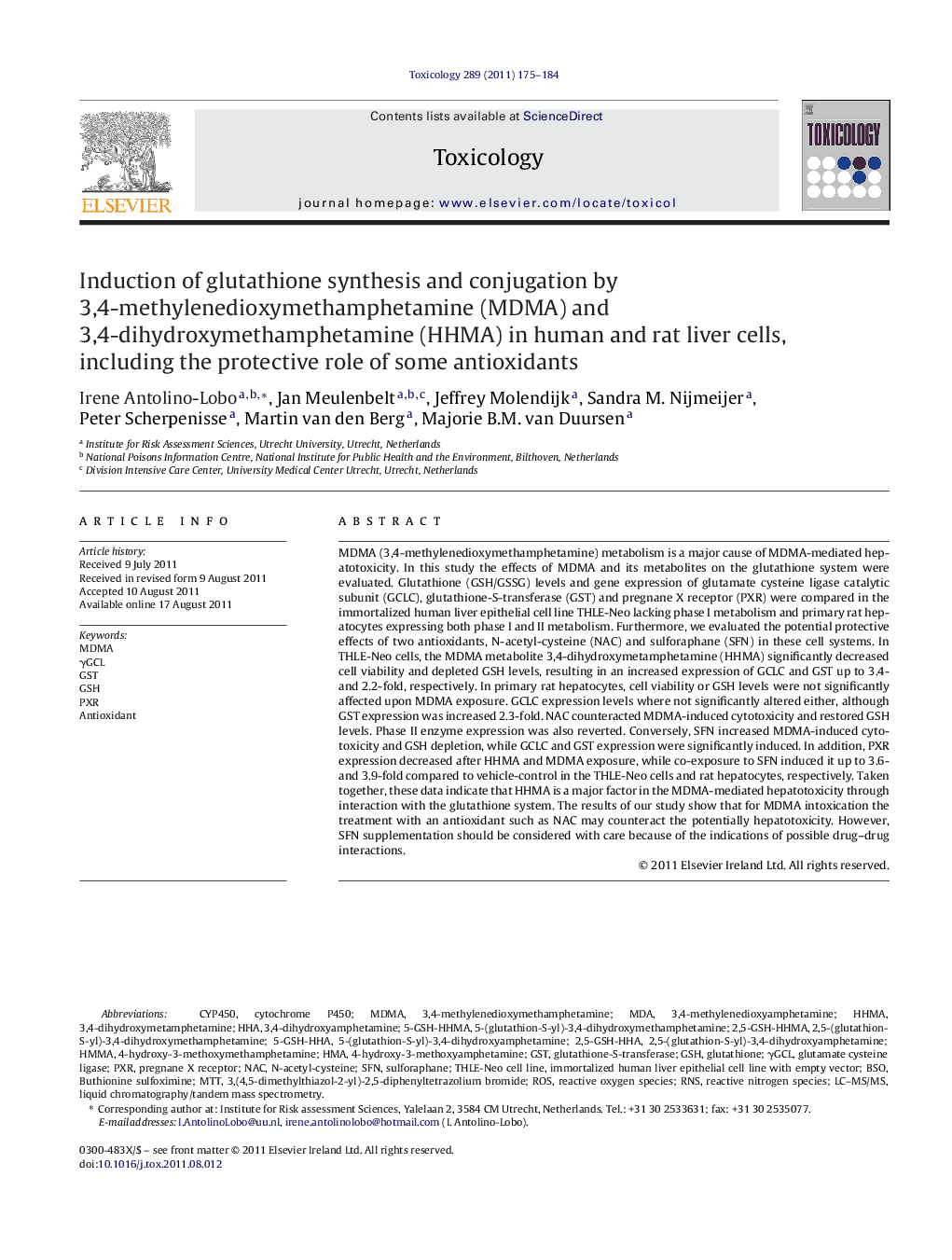| کد مقاله | کد نشریه | سال انتشار | مقاله انگلیسی | نسخه تمام متن |
|---|---|---|---|---|
| 2596047 | 1562368 | 2011 | 10 صفحه PDF | دانلود رایگان |

MDMA (3,4-methylenedioxymethamphetamine) metabolism is a major cause of MDMA-mediated hepatotoxicity. In this study the effects of MDMA and its metabolites on the glutathione system were evaluated. Glutathione (GSH/GSSG) levels and gene expression of glutamate cysteine ligase catalytic subunit (GCLC), glutathione-S-transferase (GST) and pregnane X receptor (PXR) were compared in the immortalized human liver epithelial cell line THLE-Neo lacking phase I metabolism and primary rat hepatocytes expressing both phase I and II metabolism. Furthermore, we evaluated the potential protective effects of two antioxidants, N-acetyl-cysteine (NAC) and sulforaphane (SFN) in these cell systems. In THLE-Neo cells, the MDMA metabolite 3,4-dihydroxymetamphetamine (HHMA) significantly decreased cell viability and depleted GSH levels, resulting in an increased expression of GCLC and GST up to 3.4- and 2.2-fold, respectively. In primary rat hepatocytes, cell viability or GSH levels were not significantly affected upon MDMA exposure. GCLC expression levels where not significantly altered either, although GST expression was increased 2.3-fold. NAC counteracted MDMA-induced cytotoxicity and restored GSH levels. Phase II enzyme expression was also reverted. Conversely, SFN increased MDMA-induced cytotoxicity and GSH depletion, while GCLC and GST expression were significantly induced. In addition, PXR expression decreased after HHMA and MDMA exposure, while co-exposure to SFN induced it up to 3.6- and 3.9-fold compared to vehicle-control in the THLE-Neo cells and rat hepatocytes, respectively. Taken together, these data indicate that HHMA is a major factor in the MDMA-mediated hepatotoxicity through interaction with the glutathione system. The results of our study show that for MDMA intoxication the treatment with an antioxidant such as NAC may counteract the potentially hepatotoxicity. However, SFN supplementation should be considered with care because of the indications of possible drug–drug interactions.
► The MDMA metabolite (HHMA) causes hepatotoxicity by interaction with the GSH system.
► N-acetyl-cysteine could counteract MDMA-induced cytotoxicity and restore GSH levels.
► MDMA-mediated detoxification could be stimulated by NAC supplementation.
► Sulforaphane (SFN) increased MDMA-induced cytotoxicity and GSH depletion in vitro.
► SFN use should be considered with care because of risk for drug–drug interactions.
Journal: Toxicology - Volume 289, Issues 2–3, 18 November 2011, Pages 175–184